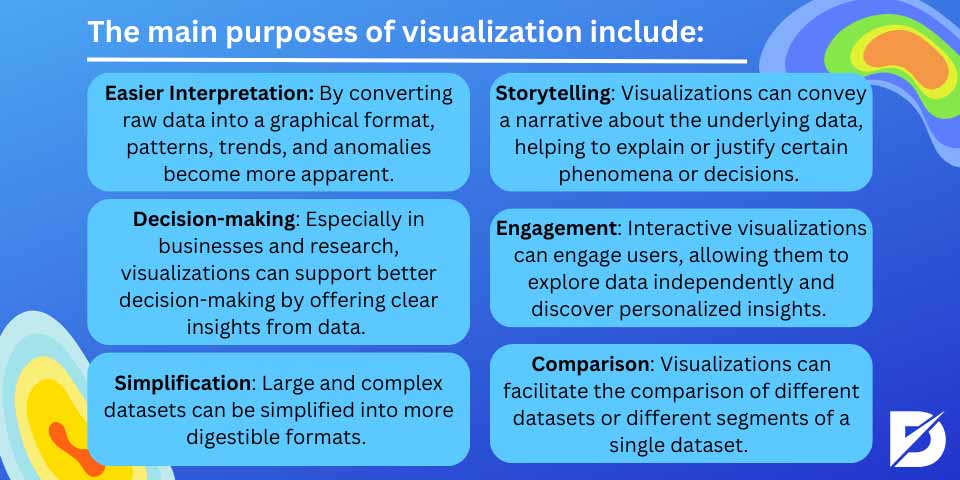In the vast world of data visualization, the term ‘heatmap’ often surfaces, capturing the attention of marketers, website designers, and data analysts alike. So, what is a heatmap? Simply put, it’s a graphical representation of data where individual values are represented as colors, with varying intensities indicating the magnitude or frequency. Imagine a geographical map where areas with high activity glow brightly, while less active areas remain dim. Intrigued? This article delves into the intricacies of heatmap visualization, explaining its importance, applications, and how it can unveil patterns and behaviors that might otherwise go unnoticed.
What Are Types Using Heatmaps Visualization?
Heatmaps are commonly used in various files:
- Website Analytics: To represent which parts of a webpage users most frequently interact with. Darker or hotter colors indicate areas where users interact the most, such as clicking or moving their mouse over, while lighter or cooler colors indicate areas with less interaction.
- Biology and Medicine: To visualize gene expression levels in different samples.
- Geographical Data: To show concentration levels of a particular variable across a geographical area. This is where map data visualization and maps data visualization become very useful, allowing users to visualize map data effectively.
- Correlation Matrices: To show how closely related data sets might be in finance and other sectors.
- Machine Learning: To visualize feature importance or activation maps in deep learning.

The key benefit of a heatmap is its ability to present complex quantitative data in an easy-to-digest, visual format. One can quickly sense patterns, concentrations, or hotspots in the data by just glancing at the varying colors (from cool to warm or vice versa). This heat map visualization is often done using tools like heat map tableau.
When creating a heatmap, choosing an appropriate color palette is crucial. The right palette can make patterns clear and intuitive, while a poor choice can obscure or misrepresent the heat map data.
What Is Heatmap?
A heatmap is a data visualization tool that uses color to represent the values of a matrix or dataset. Each color corresponds to a value or range of values, allowing the viewer to quickly discern patterns, variations, or areas of concentration in the data heat map. Here’s a simplified breakdown of a heatmap:
- Visual Representation: Data points are typically represented as a grid in a heatmap. Each cell in the grid corresponds to a specific value or range of values.
- Color Spectrum: The heatmap uses a color spectrum (often transitioning between two or more colors) to represent the range of values in the dataset. Commonly, cooler colors (e.g., blues) might represent lower values, while hotter colors (e.g., reds) might represent higher values.
- Use Cases:
- Web Analytics: Heatmaps can show where users click on a website or how far they scroll.
- Geographical Data: Heatmaps can display concentrations of events or attributes in specific areas on a map.
- Scientific Research: In genomics, heatmaps can represent the expression of genes across different samples.
- Business Analytics: Heatmaps can visualize sales data, customer behavior, or inventory across different regions or periods.
- Correlation Heatmaps: Used to visualize the correlation coefficients between multiple variables. Examining heat map examples can be beneficial to understanding cases.
- Benefits:
- Quick and intuitive visualization of complex datasets.
- Identification of patterns, trends, or anomalies in the data.
- Effective for representing dense datasets where individual data points would be hard to distinguish.
A heatmap is a powerful visualization tool that uses color intensity to communicate variations in data values, making it easier to identify patterns or trends in large datasets.
Defining Visualization
Visualization, in the context of data analysis and information representation, refers to the graphical representation of data or information. It’s translating complex, quantitative, or qualitative data into a visual format, making it easier to understand, interpret, and derive insights.
Visualizations can range from basic charts and graphs, like bar and line charts, to more complex representations, such as heatmaps, scatter plots, geographic maps overlaid with data, treemaps, and network diagrams.
The main purposes of visualization include:

- Easier Interpretation: By converting raw data into a graphical format, patterns, trends, and anomalies become more apparent. What might take hours to discern from spreadsheets can be immediately recognized in a well-crafted visualization.
- Storytelling: Visualizations can convey a narrative about the underlying data, helping to explain or justify certain phenomena or decisions.
- Decision-making: Especially in businesses and research, visualizations can support better decision-making by offering clear insights from data.
- Engagement: Interactive visualizations can engage users, allowing them to explore data independently and discover personalized insights.
- Simplification: Large and complex datasets can be simplified into more digestible formats.
- Comparison: Visualizations can facilitate the comparison of different datasets or different segments of a single dataset.
Examples of visualization tools include Tableau, Microsoft Power BI, Google Charts, and D3.js, among many others. As data continues to play a significant role in various sectors, the importance of effective data visualization grows correspondingly.
How to Read a Heatmap
Reading a heatmap involves interpreting the colors and patterns presented on the grid to understand the underlying data. Here’s a step-by-step guide on how to read a heatmap:
Understand the Context
Before diving into the heatmap, understand what the heatmap represents. Is it a correlation matrix, website click data, gene expression levels, or something else? Knowing the context will guide your interpretation.
Check the Legend or Color Scale
- Heatmaps usually have a legend or color scale indicating the values range and their corresponding colors.
- Look for the range of values: which values are considered low, medium, and high.
- Understand the color gradient: Determine which colors correspond to higher values and which correspond to lower values. For instance, a common scheme might transition from blue (low) to red (high).
Identify Patterns
- Clusters: Areas of the heatmap with similar colors are clusters. They indicate that those data points have similar values.
- Gradients: A gradual color change indicates a trend. For example, changing colors from blue to red suggests an increasing trend.
- Outliers: If most of the heatmap is one color, but a few cells are a distinctly different color, those cells represent outliers or unique points of interest.
Interact (if possible)
- Some heatmaps, especially digital ones, are interactive. Hovering over cells might provide exact values or additional information.
- Zooming in or adjusting the scale can provide more granularity or a broader overview.
Consider Hierarchical or Clustered Heatmaps
Some heatmaps have rows and columns clustered hierarchically based on similarity. The branches or dendrograms (often on the sides of the heatmap) indicate how data points (or rows/columns) are grouped.
Correlation Heatmaps
If the heatmap represents correlations, it is often symmetrical around a diagonal. Values close to +1 or -1 (often shown in distinct colors) indicate strong positive or negative correlations, respectively. Values close to 0 (often in a neutral color) show little correlation.
Additional Annotations
Some heatmaps have values, labels, or other annotations within cells to provide more information. Read these to get specifics beyond the color representation.
Reflect on Insights
Once you’ve interpreted the heatmap, consider what the patterns and data mean in the broader context. For example, if it’s a heatmap of website clicks, are there areas of a webpage that get significantly more attention?
Last Words
Heatmap visualization is a dynamic and intuitive method of representing complex data sets. Heatmaps allow for quick pattern recognition using color gradations, making dense data more digestible. Their versatility is evident across various domains, from website analytics and geographical data to biology, finance, and machine learning. While the principle behind heatmaps—using color intensity to communicate data variations—is straightforward, the application requires careful consideration of color palettes and an understanding of the context.
Frequently Asked Questions About
Heatmaps are ideal for large datasets with comparisons across two dimensions. They’re commonly used for matrix data, spatial information, temporal changes, and correlation matrices.
Choose color schemes based on your data type: sequential for progressive data, diverging for data with a significant midpoint, and qualitative for categorical data. Always consider color-blind accessibility.
No, only digital heatmaps often offer interactivity. Print versions are static, and while interactivity aids understanding, it’s not always present.
Clusters are areas of similar colors, indicating similar data values. Hierarchical heatmaps further group these values, sometimes with dendrograms showing similarity levels.
Yes, heatmaps can visualize qualitative data transformed into numerical format, like encoding categorical data with numbers. Ensure the encoding makes contextual sense.





No comments to show.